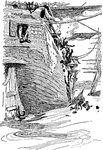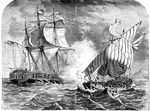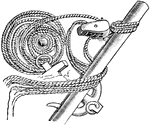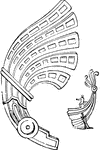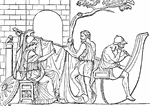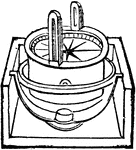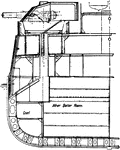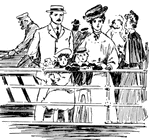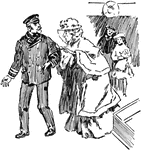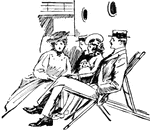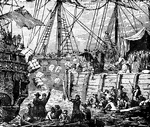
A Ship
A ship on the acrostolium of which hangs a shield, an emblem of the mercantile and warrior city of Tyre.…
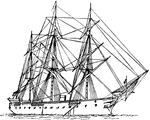
A-cockbill
"Nautical-with ends pointing upward. Image: Man-of-war with Yards a-cockbill."-Whitney, 1902

Acrostolium
"The stern of a ship, also the gunwale of a ship, the extremity of a ship's beak."-Whitney, 1902

Cable Air Ship
An airship or dirigible is an aircraft that can be steered and propelled through the air using rudders…

Anchor
The anchor used by the ancients was for the most part made of iron and its form... resembled that of…
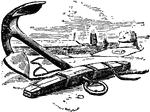
Anchor
An anchor is an object, often made out of metal, that is used to attach a ship to the bottom of a body…
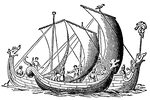
Anglo-Saxon Ships with Wind in the Sails
A fleet of three ancient Anglo-Saxon ships, each with wind filling the lone sail. Each ship has a dragon…

Annam
"A narrow flat-bottomed fishing-boat having an outrigger, much used in Annam" (Vietnam). -Whitney, 1911
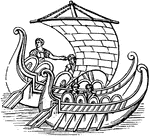
Antenna
"The yard of a ship. The ships of the ancients had a single mast in the middle, and a square sail, to…

Antenna
"The yard of a ship. The ships of the ancients had a single mast in the middle, and a square sail, to…
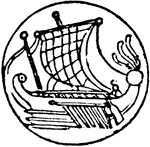
Antenna
"The yard of a ship. The ships of the ancients had a single mast in the middle, and a square sail, to…

Aphractus
"Called also navis aperta, a ship which had no deck but was merely covered with planks in the front…

Aplustre
"An ornament of wooden planks, which constituted the highest part of the poop of a ship. From the representations…
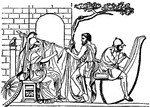
Building the Argo
"At that time the only species of navigation known to the Greeks consisted of small boats or canoes…

Barge with Diving Bell
"Sectional view of diving bell and barge, employed on the River Clyde. All the appliances are worked…
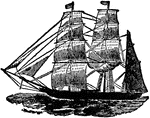
Bark
"A Bark, or Barque, is a three-masted vessel of which the foremast and mainmast are square-rigged, but…
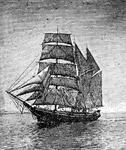
Barkantine
A three masted vessel, with the foremast square rigged, and the mainmast and mizzemast fore and aft…
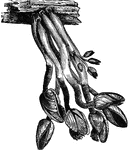
Barnacles
"The Common Barnacle, Lepas anatifera, perhaps the best-known example of the order, generally…

Japanese Imperial Navy Tatsuta Battlecruiser
Japanese Imperial Navy Tatsuta battlecruiser launched in 1918. One of the first ships to be armed with…

United States Navy Omaha Class Battlecruiser
A U.S. Navy Omaha class battlecruiser launched in 1920. The top speed of the cruiser is 35 knots (40…

British Royal Navy Destroyers and Flotilla Leaders Battleship
"These vessels (destroyers and Flotilla leaders) gradually increased in size and power, and war requirements…

Hindenburg German Navy Battleship
German Navy Battlecruiser, SMS Hindenburg. The ship was launched in 1915, and used during World War…

Iron Duke Class British Battleship
A 1912 British navy battleship Iron Duke class. Battleships in this class is operated by steam and have…

Russian Navy Battleship
"Four battle cruisers were launched in 1915, but they had not been completed up to 1921. On a displacement…

Binnacle
"A Binnacle, corrupted from bittacle, a wooden case or box in which the compass on board a ship is kept…
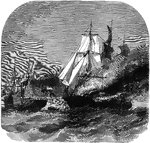
Harvey Birch
"Burning of the American merchantman "Harvey Birch," of New York, Captain Nelson, in the British Channel,…
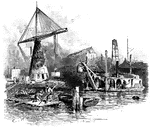
Dredging Boat and Derrick
An illustration of a dredging boat (right) and a derrick (left). A derrick is a lifting device composed…
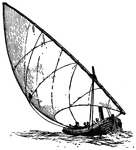
Boat with Lateen-sail
A lateen-sail is a triangular sail extended on a yard which is slung one quarter from the lower end…
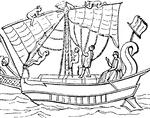
Greek Boat
"The masts were usually taken down when the vessel arrived in port, and raised again when it was about…
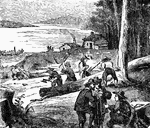
Boatbuilding on Manhattan Island
Adrian Block and his companions on Manhattan Island buidling a vessel.
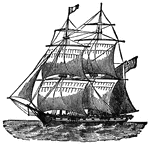
Brig
A sailing vessel with two masts rigged like the foremast and mizzen-mast of a full-rigged ship.
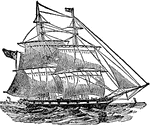
Brig
"A Brig, (contracted from brigantine), is a vessel with two masts, square-rigged on both."—(Charles…

Brig
"Brigantine: a square-rigged vessel with two masts and fore and aft mainsail." — Williams, 1889
